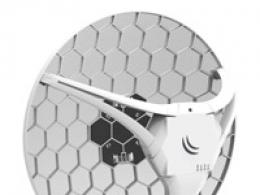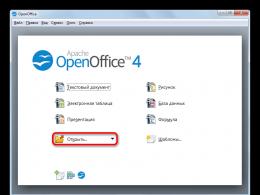What is a dwm user 1. What is Windows Window Manager and why is it CPU intensive
If you are looking for an answer to this question, then you are either just curious, or you stumbled over this process, which suddenly began to behave not quite culturally and consume too many resources of your computer. Like a dozen previous articles about Windows processes, this article will walk you through the details of the dwm.exe process, also known as the Windows Window Manager.
What is dwm.exe
Dwm.exe is the executable file of the Desktop Windows Manager process or simply "Windows Window Manager". Already from the name itself, you can understand that this process plays an important role in the operation of the operating system and is directly related to the Windows interfaces. Dwm.exe is an integral part of your computer and works always. The task of the process is to render the effects and beauties of the Windows interface: transparency, animations, thumbnails, tile effects, and so on. Moreover, dwm.exe is even responsible for supporting high resolution screens.
Applications on your computer "draw" their windows to a specific location in the computer's memory. Then Windows creates a "composition" of all these windows and then sends it as one picture to the monitor screen.
How to disable Windows Window Manager
Disabling this process is not worth it, and it cannot be disabled. Back in the days of Windows Vista, the Windows Window Manager was managed by a service that can be turned off. When turned off, the system lost all its visual beauty. In Windows 7, dwm.exe has become an integral part of Windows, vital for rendering the user interface. In Windows 8 and Windows 10, this integration has been enhanced.
Often, users tried to disable the Windows Window Manager in Vista because the interface, animations, transparency, and other design delights consumed too many resources and interfered with the normal operation of the computer. Fortunately, with the release of Windows 7, the Windows Window Manager began to work much more adequately and now loads less memory, processor and computer graphics. As a result, there is absolutely no need to try to disable dwm.exe.
Dwm.exe uses a lot of CPU
Windows Window Manager should not cause a headache to the user and under normal conditions, the load on the processor should not exceed a couple of tenths of a percent, and the amount of RAM should not increase above a couple of tens of megabytes. In very rare cases, the load may increase, but at the same time it very quickly returns to its standard indicators, which in no way affect the performance of your computer.
But there are cases when dwm.exe cannot calm down and for a long time the load on the processor, memory or graphics does not fall. In this case, it makes sense to try two things:
Make sure the graphics driver is properly installed and updated to the latest version. This is especially true for computers with integrated graphics. The Windows Window Manager shifts most of the processor's work to the graphics, so a correctly and stably working driver is not the most important component.
Check your computer for viruses. Yes, it happens that some malware leads to a load on the hardware of the computer precisely by the dwm.exe process or the Windows Window Manager.
dwm.exe virus
The Windows Window Manager itself cannot be a virus, just like any other standard operating system process. This is an official component of Windows, so on a working computer it quietly performs its function and does not interfere with the user. Unlikely, but it can still happen that a virus or other malware begins to disguise itself as dwm.exe. You can check this in the traditional way for such cases.
All system processes are in most cases stored as executable exe files in the C:\Windows\System32 folder. You need to check the location of the system process that you suspect of bad actions. To do this, open the Task Manager, find the Windows Window Manager process and right-click on it. Select Open file location. The operating system should open File Explorer in the C:\Windows\System32 folder and highlight the file dwm.exe. If you have opened another folder, then you can state that the computer is infected with pests. Here already you will need an antivirus application, like the standard Windows Defender or any other third-party antivirus.
I decided to write a short article on the topic if computer freezes what to do Windows 7. I will try to describe the main problems why the computer freezes, and if computer freezes what to do. Why browsers freeze and what to do about it, I wrote in previous articles, so there is a lot of information about this, but there is one problem that concerns ONLY the Windows 7 operating system and if you computer freezes what to do think there is a solution. This problem is called the DWM.exe process (I will write dwm exe in the future). So,- what is dwm.exe? - this is a process in the windows system that often leads to the question that the computer freezes what to do and makes browsers freeze. This problem is not for everyone and not frequent, although not so rare ... This muck ruffled my nerves pretty much at the time. With this problem, browsers and programs freeze, and browsers often freeze when opening some kind of videos, or pictures ...
probably need to figure it out first. what is dwm.exe and why is it needed.
what is dwm.exe(Microsoft Desktop Window Manager) in Russian: Microsoft Desktop Window Manager- this thing has been introduced into Windows since Windows Vista and is contained in a system called the Desktop Window Manager (DWM). The program is needed in order to process graphical effects on the desktop, such as window previews and things like Aero Glass - this is the transparency of windows in Windows 7, without using your computer's processor resources. Removing the dwm.exe program improves the performance of your computer, but prevents you from using the graphical features of the new Windows Vista interface. But here's the trouble - you can remove it only in Windows Vista, in the seven it is so embedded that I understand it is impossible to remove it, since Windows will not work without it.
dwm.exe is a system process,The dwm.exe file is always located in the C:\Windows\System32 folder. If a file is found elsewhere, it must be deleted immediately. Currently, there is a known presence of malicious software that uses the name dwm.exe to hide its presence in the system, but this is in Windows XP or Vista, in Win 7 this has not been observed so far.
Yes, my laptop often at first freezes the computer what to do, I also thought, and could not understand what was the matter - after digging for a very long time I figured out that the problem was in the dwm exe process. Well, of course, I began to understand what dwm exe is. I searched for a solution wherever I could, I found almost nothing, only scraps of information explaining nothing... yes and dwm exe that this is also not very clear was written everywhere. In general, I realized that this is a problem of the operating system itself, a Microsoft flaw, there is a small conflict or incompatibility of the DWM program with the hardware of the computer itself. Therefore, this problem does not bother many, and for some it becomes a problem. According to unofficial statistics, only less than 1% of all those who have Windows 7 have such a problem. What to do if you are among these 1%? and started looking for dwm exe what is it or the computer freezes what to do?
There is no complete solution.
You can only get rid of the program. But since you cannot remove it from Win 7 without serious consequences, you can turn off the Aero effect. Then everything works - CHECKED! But beautiful transparent windows will have to be abandoned.But here you have to sacrifice something - otherwise you will suffer. In the meantime, if it does not freeze often, the freeze is “cured” by a simple restart of the computer. Naturally, you need to clean the cache and cookies of browsers and the registry, as I wrote in: You can reboot until it gets really bad, and even that won’t help ... Naturally, you need to protect your computer from viruses, since malicious java scripts penetrate browser cookies through browser cookies and it immediately starts to hang ... in general, you can poke around for a long time until it stops there is nothing to help ... Then you will have to reinstall the system according to any ... so that it is very simple - do a backup as I wrote in- 15 minutes and everything will be as it was, and you won’t have to poke around for several days to set everything up again. In order to quickly deal with frozen programs or frozen browsers, use the Process Killer 1.4.2 program - this is a tiny program that is called by pressing the Ctrl + Left keys. Shift + ~ (e button on your keyboard) - it displays all running processes on the computer and kills them instantly, it can even restart a frozen explorer.exe (Windows Explorer) or the registry editor, for example, launches the "run" application, displays the CPU and system memory load , is called from many games and in any state, so you can always kill a hung process very quickly and without any problems:
download process killer
How to turn off Aero
To do this, you need to disable several Aero features: How to disable Aero Peek , Aero Peek is the transparency of desktop windows:
On the Taskbar, call Properties, on the Taskbar tab, uncheck Use Aero Peek for Preview:
Click "apply" and "ok".
How to disable Aero Snap
this is to expand windows to full screen by dragging them to the edge of the screen:Open Control Panel - Ease of Access Center:


in the section where it says Simplified window management, check the box Disable automatic ordering of windows when they move to the border of the screen:

Desktop Window Manager(Desktop Window Manager) is a window manager that has been present in the Windows operating system since the release of Vista.
It was originally created to add effect Aero, nevertheless, soon the functionality DWM was expanded and became an integral part of Windows.
Features of the Desktop Window Manager
As mentioned above, the main task dwm.exe is a desktop window manager, it monitors the display of all the pixels on your computer screen.
DWM can also be called a layout tool. Why? It uses graphic information collected from all simultaneously open applications (browser window, explorer, etc.) and creates the final image, which we are used to seeing as a regular set of windows.

DWM manages more than just windows. It is also responsible for important system functions such as visual effects, glass frames, screensavers, wallpapers, Windows themes, 3D animations, and Windows Flip.
The main distinguishing feature of its latest versions is the ability to save graphic data in different buffers. This allows you to implement new modern features that would not be possible to run on older systems.
How to enable or disable DWM?
Before we dive into this topic, it is important to note that Desktop Windows Manager became an important component of the operating system. Microsoft has disabled any option to disable it since the release of Windows 8. However, you can disable this service if you are using Windows 7 or Windows Vista.
Using the key combination Windows+R, enter the command services.msc and press Enter. Find the Desktop Windows Manager service and disable it.
It does not consume many resources, so it should not interfere. However, if you experience visual errors, try restarting your computer.
DWM is loading the processor or memory.
Some users have complained that the Desktop Windows Manager was taking up an excessive amount of computer resources for some reason. If you know your situation, try the following:
Turn off transparency
Go to section Personalization > Colors. Scroll the contents of the window towards the end and change the value Transparency effects on the Off.

Turn off visual effects
An important step to reduce the load on the DWM is to disable all possible Windows effects.
1. Right click on the icon My computer (This computer).
2. Go to Properties.
3. open Additional system settings.

4. Open a tab Additionally.
5. On the menu Performance go to Parameters.

6. Install active state per parameter Ensure the best performance.

7. Click Apply And OK.
These actions will significantly reduce the presentable appearance of Windows, however, the load on the DWM will be reduced, and PC performance will increase.
Third Party Application
There are many processes started by third party applications. As a result, they can directly affect the load on the system.
Remember if you installed a new program the other day - it is quite possible that the reason lies precisely in this action.
Is dwm.exe a virus?
A definite answer - No. By default, this service is located in the folder System32 system disk. If you found it in the wrong place, let's say it's another logical partition, then it makes sense to turn on alertness.
Scan your computer with Windows Defender or use third-party antivirus software to eliminate a possible virus in time.
We hope you found this article useful and helped you understand the functions of the Desktop Window Manager!
By opening the Task Manager, you can see the DWM.EXE process. Some users are panicking, assuming it might be a virus. Let's find out what DWM.EXE is responsible for and what it is.
It must be said right away that in the normal state the process we are studying is not a virus. DWM.EXE is a system process "Desktop Manager". Its specific functions will be discussed below.
To see DWM.EXE in the process list "Task Manager", call this tool by clicking Ctrl+Shift+Esc. After that, move to the tab "Processes". The list that opens should contain DWM.EXE. If such an element is absent, then this means either that your operating system does not support this technology, or that the corresponding service is disabled on the computer.

Functions and tasks
"Desktop Manager", for which DWM.EXE is responsible, is a graphical shell system in Windows operating systems, starting with Windows Vista and ending with the latest version at the moment - Windows 10. However, in some version versions, for example in Windows 7 Starter, this element is missing. For DWM.EXE to function, the video card installed on the computer must support technologies not lower than the ninth DirectX.
Main tasks "Desktop Manager" is to ensure the operation of the Aero mode, support for window transparency, preview of the contents of windows and support for some graphic effects. It should be noted that this process is not critical to the system. That is, in the event of its forced or abnormal termination, the computer will continue to perform its tasks. Only the quality level of graphics display will change.
On normal non-server operating systems, only one DWM.EXE process can run. It runs as the current user.

Location of the executable file
Now let's find out where the DWM.EXE executable file is located, which initiates the process of the same name.


Disable DWM.EXE
DWM.EXE performs fairly complex graphical tasks and loads the system relatively heavily. On modern computers, however, this load is hardly noticeable, but on devices with low power, this process can significantly slow down the system. Considering that, as mentioned above, stopping DWM.EXE does not have critical consequences, in such cases it makes sense to turn it off to free up PC power in order to direct them to other tasks.
However, you may not even completely disable the process, but only reduce the load coming from it on the system. To do this, you just need to switch from Aero mode to classic. Let's see how to do this using Windows 7 as an example.

But there is the possibility of completely disabling DWM.EXE. The easiest way to do this is through "Task Manager".

As mentioned above, this is the easiest way to stop the specified process, but not the best. Firstly, this method of stopping is not entirely correct, and secondly, after restarting the computer, DWM.EXE is activated again and you will again have to stop it manually. To avoid this, you need to stop the corresponding service.

DWM.EXE virus
Some viruses disguise themselves as the process we are considering, so it is important to identify and neutralize the malicious code in time. The main symptom that may indicate the presence of a virus hiding in the system under the guise of DWM.EXE is the situation when "Task Manager" you see more than one process with that name. On a normal, non-server computer, there can only be one real DWM.EXE. In addition, the executable file of the real process can be located, as was explained above, only in this directory:
C:\Windows\System32
The process, the launch of which initiates a file from another directory, is a virus. You need to scan your computer for viruses with an antivirus utility, and if the scan does not give results, then you should delete the false file manually.
DWM.EXE is responsible for the graphic component of the system. At the same time, its stop does not pose a critical threat to the functioning of the OS as a whole. Sometimes viruses can be hidden under the guise of this process. It is important to find and neutralize such objects in time.
Sometimes dwm.exe and other EXE system errors can be related to problems in the Windows registry. Several programs can use the dwm.exe file, but when those programs are uninstalled or changed, sometimes "orphaned" (invalid) EXE registry entries are left behind.
Basically, this means that while the actual path to the file may have been changed, its incorrect former location is still recorded in the Windows registry. When Windows tries looking up these incorrect file references (file locations on your PC), dwm.exe errors can occur. In addition, malware infection may have corrupted the registry entries associated with Windows. Thus, these invalid EXE registry entries need to be repaired in order to fix the root of the problem.
Manually editing the Windows registry to remove invalid dwm.exe keys is not recommended unless you are PC service professional. Mistakes made while editing the registry can render your PC unusable and cause irreparable damage to your operating system. In fact, even a single comma in the wrong place can prevent your computer from booting up!
Because of this risk, we highly recommend using a trusted registry cleaner such as %%product%% (Developed by Microsoft Gold Certified Partner) to scan and repair any dwm.exe-related registry problems. Using a registry cleaner automates the process of finding invalid registry entries, missing file references (like the one causing your dwm.exe error), and broken links within the registry. A backup copy is automatically created before each scan, allowing you to undo any changes with a single click and protecting you from possible damage to your computer. The best part is that fixing registry errors can drastically improve system speed and performance.
A warning: Unless you are an advanced PC user, we do NOT recommend manually editing the Windows Registry. Incorrect use of the Registry Editor can lead to serious problems and require you to reinstall Windows. We do not guarantee that problems resulting from misuse of Registry Editor can be resolved. You use the Registry Editor at your own risk.
To manually repair your Windows registry, first you need to create a backup by exporting a portion of the registry related to dwm.exe (eg. Windows):
- Click on the button Begin.
- Enter " command" in search bar... DO NOT PRESS YET ENTER!
- Holding keys CTRL-Shift on the keyboard, press ENTER.
- An access dialog will be displayed.
- Click Yes.
- The black box opens with a blinking cursor.
- Enter " regedit" and press ENTER.
- In the Registry Editor, select the dwm.exe-related key (eg. Windows) you want to back up.
- On the menu File select Export.
- Listed Save to select the folder where you want to save the Windows key backup.
- In field File name enter a name for the backup file, such as "Windows Backup".
- Make sure the field Export Range value selected Selected branch.
- Click Save.
- The file will be saved with .reg extension.
- You now have a backup of your dwm.exe-related registry entry.
The next steps for manually editing the registry will not be covered in this article, as they are likely to damage your system. If you would like more information on editing the registry manually, please see the links below.






